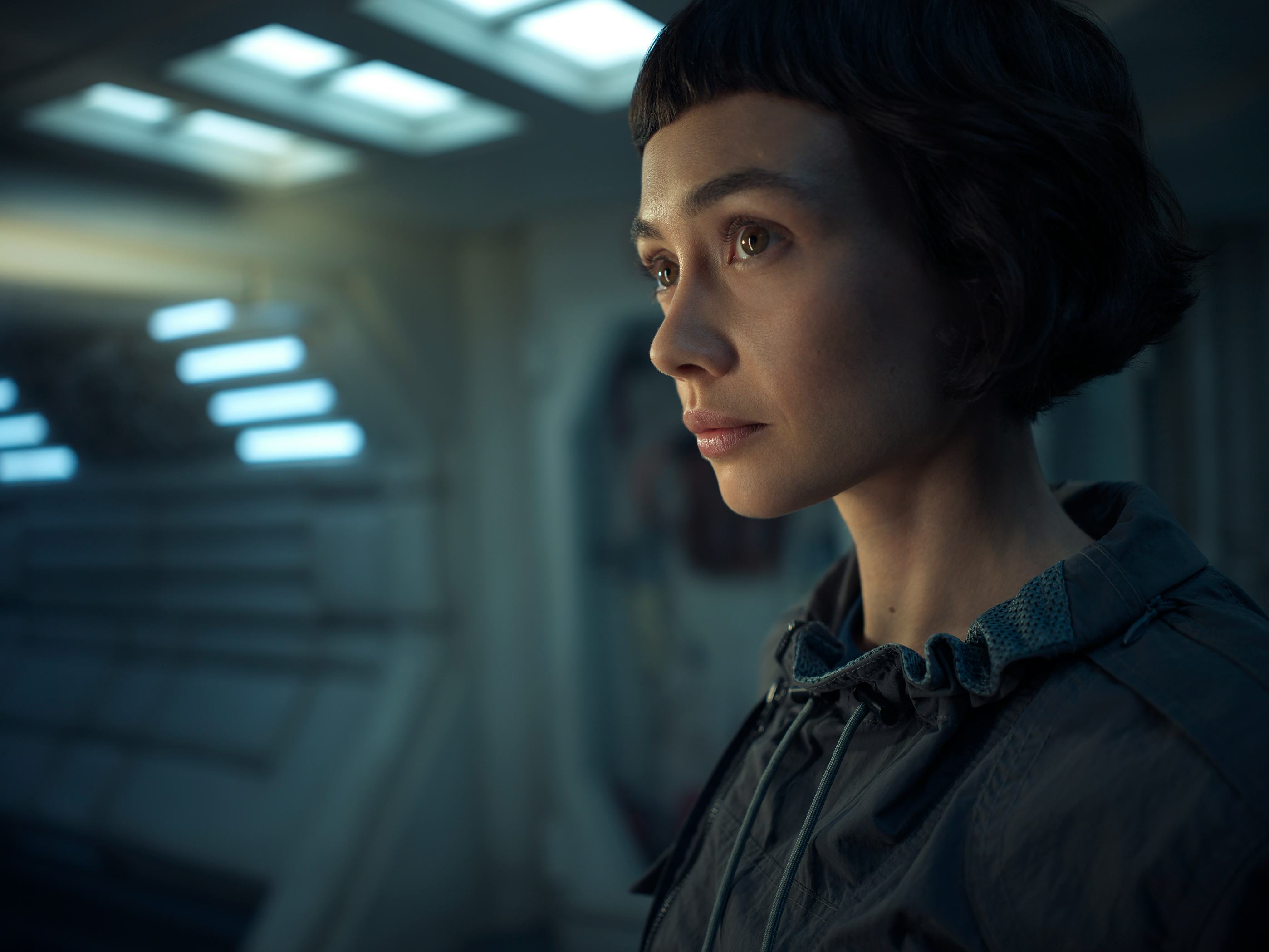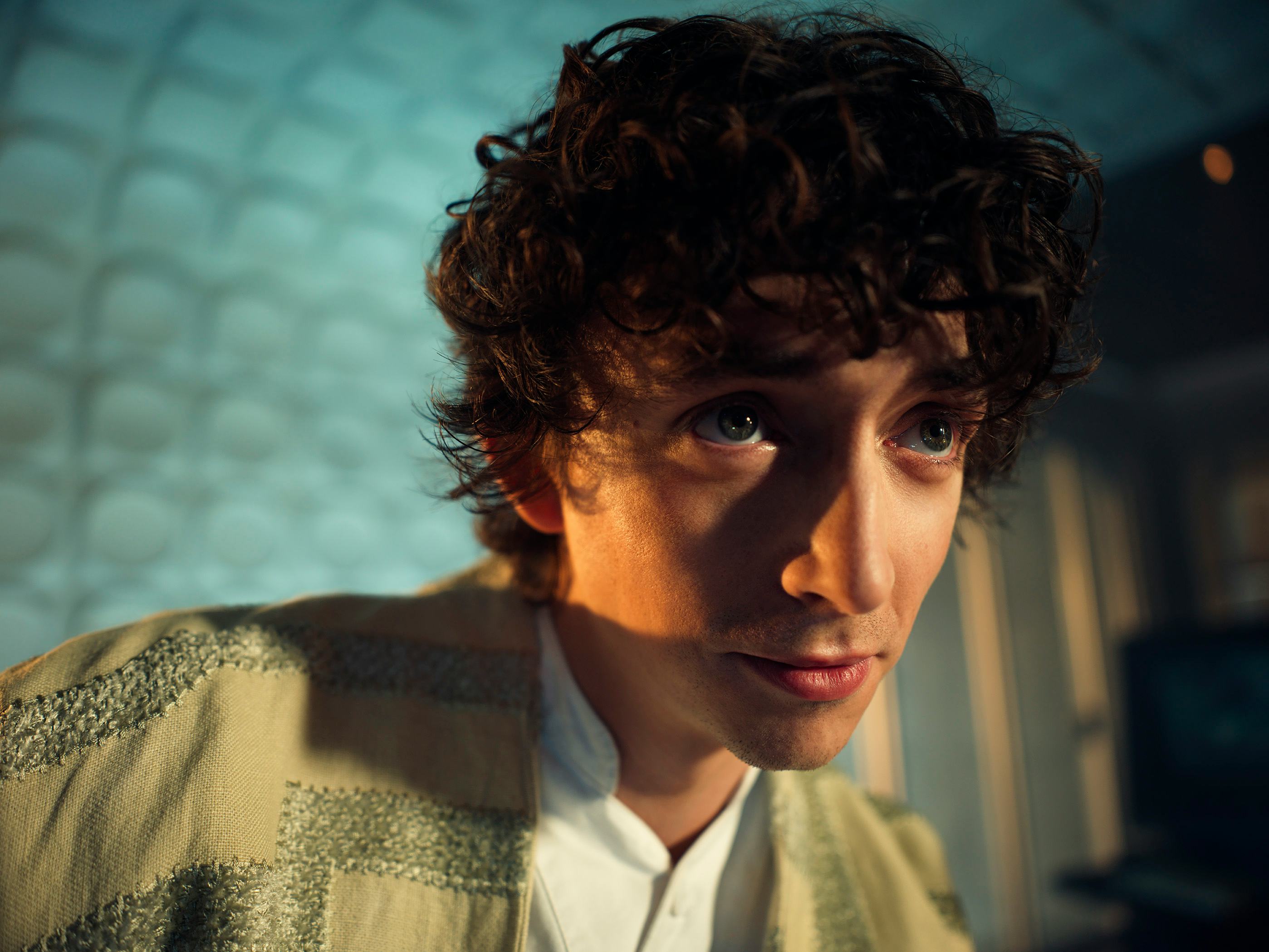
After intriguing buzz and a ton of secrecy, Alien: Earth has finally arrived. The ambitious science fiction series, created by Noah Hawley, reimagines the Alien mythos in shocking ways. Throughout the two-episode premiere, fans of the venerable series will see plenty of bloody and squeamish xenomorph action, which rivals some of the most horrific moments in the entire franchise. In fact, in certain shots, the attacking xenomorphs are even more frightening than last year’s cinematic offering from the franchise, Alien: Romulus. If there was any question that the Alien world wouldn’t work on TV, the terror of Alien: Earth proves otherwise.
And yet, the most compelling aspect of Alien: Earth’s debut has literally nothing to do with preexisting Alien lore, and really makes one wonder if this needed to be an Alien show at all.
Mild spoilers ahead.
The primary protagonist of Alien: Earth is a human “hybrid” named Wendy (Sydney Chandler). She looks like a young adult woman, but really, her mind is that of a young girl who was about to succumb to a terminal illness. The artificial body that is built for her comes from the geniuses in the nation-state of “Prodigy,” which is run by mogul Boy Kavalier (Samuel Blenkin). As a major driver of the plots of Alien: Earth, Kavalier is a kind of amoral Mark Zuckerberg figure, who, instead of being into technological advances, is focused on “exploding human potential.” He’s obsessed with Peter Pan, and nicknames Wendy and the other child-like hybrids “the Lost Boys.”
For those who have endured countless Peter Pan (or Pinocchio) analogies in science fiction and fantasy over the decades, on paper, this concept might sound a little tiresome or trite; precocious robot-esque children trying to find what it means to be “real.” And yet, everything about Wendy and the other hybrids represents the most refreshing and original aspects of Alien: Earth.

Not only is it made clear early on that these procedures are borderline illegal, but there are also interesting questions about the morality of what entails curing someone of an illness. Naturally, it’s a miracle that Wendy and her terminally ill brethren are able to live new lives in super-powered bodies, but whether or not they’ve retained their humanity is unclear. While its vaguely tempting to draw real-world analogies to this situation, the truth is, what makes Wendy so compelling is that her status quo is a fantastic, thought-provoking science fiction idea.
In the second episode, Kavalier claims he hopes the hybrids will supply him with “interesting conversations,” but the conversation the show is having about the basic nature of the hybrids is very interesting. As science fiction beings, they are both human and not, and very different from other synthetic lifeforms in other corners of the Alien canon. Any comparisons between David (Michael Fassbender) in Prometheus and Wendy in Alien: Earth would be fruitless. Not only are they not the same kind of artificial lifeform, they’re also each made in entirely different ways.
The fact that Alien: Earth juggles not one, not two, but three different types of synthetic lifeforms is a testament to the show’s bravery and nimble writing. But, the nuance of Wendy and the hybrid “Lost Boys” runs in stark opposition to the titular aliens — those pesky, creepy xenomorphs that have been causing a ton of trouble since 1979.
Because the show is called Alien: Earth, we’re made to understand that our characters have to have run-ins with aliens on Earth. And yet, the story of the hybrids, at least at first, doesn’t exactly seem to need the titular aliens. In this way, Alien: Earth’s debut episodes sometimes feel like mashed-up pilot episodes for two different TV shows. And, depending on which thing you’re more interested in, you may be annoyed by the amount of time the show spends on each facet.
For longtime fans of the jump scares of the Alien franchise, there’s plenty to enjoy. But, arguably, the best aspects of Alien: Earth work totally independently of that preexisting aesthetic. By the second episode, Wendy and the hybrids become a group of pseudo first-responders, trying to sort through the wreckage of the downed ship, the Maginot. Wendy has a specific and personal reason for wanting to be part of this mission; her long-lost brother, “Hermit” (Alex Lawther), is a medic who is part of the team trying to assess the wounded in this alien-infested craft. But because Wendy is now in an adult body, despite having never really grown up, her obsession with finding her brother is not only heartfelt but slightly more compelling than anything the xenomorphs are doing.

If you squint, all of this could scan as dramatic realism. In the 1979 Alien movie, the xenomorphs interfered with the lives of some honest working stiffs. There was no real connection or reason for those characters to become tangled up with the aliens; they all just happened to be close by. Wendy and the Lost Boys in Alien: Earth are the same; their situation has nothing to do with the xenomorphs, they all just happen to be in the neighborhood.
And so, Alien: Earth presents a kind of discordance between two kinds of sci-fi narratives, the contemplative story of the hybrids and the horror-fest action of the xenomorphs. Will one narrative reign supreme in the end? We’ll see. Alien: Earth has seven more episodes to fully reveal what kind of sci-fi show it will evolve into.







